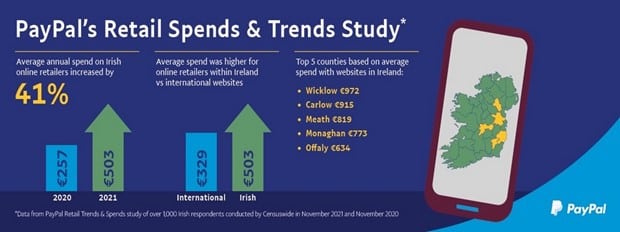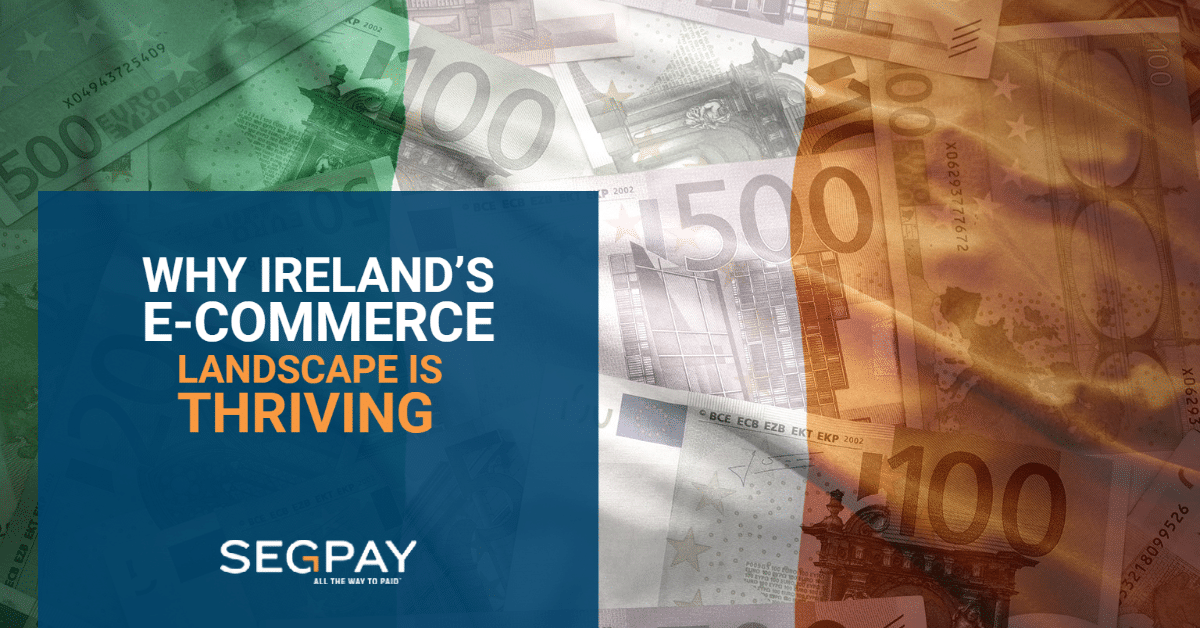- 5 minute read
Often referred to as “The Emerald Isle,” Ireland is the second-most populous island in Europe. Ireland has been a member of the European Union since 1973. Even though its five million residents live in one of the EU’s smallest countries, Ireland has the fastest growing economy (14.04%) in the EU and the highest GDP per head. World Economics estimates that its GDP in purchasing power parity (PPP) could amass to $577 billion (€537 billion) – 12% larger than official estimates, when adding the size of its informal economy. In fact, in June 2022, Segpay, a global leader in online payments processing, opened its EU headquarters based in Dublin, Ireland and became a licensed payment institution banking through the Central Bank of Ireland in 2019 making Segpay fully Brexit compliant.
The Development of Ireland's International Financial Services Sector into 2025
Previous to Brexit, Ireland already had established its solid position as a major data hub, storing and securing an impressive 30% of Europe’s data. Ireland’s digital maturity, combined with its government’s strong support of innovative financial technology has created the perfect business environment for Fintech start-ups. This spring, “Ireland for Finance” was launched as part of the government’s long-term strategy to transform Ireland into a leading international financial services (IFS) hub by 2025.
When Brexit forced financial giants such as JPMorgan, Citi and Bank of America to move out of the UK, the choice was easily made. Ireland is known for its low 12.5% corporate tax rates. It shouldn’t come as a surprise that so many financial market leaders, established payment firms and innovative startups chose to relocate to Ireland. At Segpay we really thought Ireland would be the perfect EU headquarters and when it was clear Brexit was going to move forward, we began the process of becoming a licensed payment institution. The process took more than two years, but Segpay was able to get approval before the Brexit deadline. The local Ireland office is home to both the EU staff and its EU board of directors.
Ireland’s OECD approved “Knowledge Development Box” regime applies to research and development (R&D) carried on in Ireland, which qualifies for an extra tax credit of 25% in addition to the standard deduction. A favorable tax climate that appeals to tech companies and innovators and many have relocated their IP assets to this growing financial EU hub. Between 2016 and 2021, Dublin welcomed 135 new financial companies, one fourth of all Brexit-related relocations. Segpay is proud to be one of them.
Furthermore, the European Union has taken several initiatives to soften the blow provoked by Brexit. British citizens are entitled to live and work freely in Ireland with no restrictions and last Winter, the EU announced that Ireland would receive €911.54M from a European Commission fund, designed to “mitigate the impact of Brexit.” Ireland is the largest beneficiary and has been promised close to €300M a year, from 2021 until 2023.
A Mobile e-Commerce Walhalla
The COVID pandemic has accelerated e-commerce worldwide and Ireland has been no exception. E-commerce revenue is projected to reach €7.5 billion in 2022 with annual growth rate (CAGR 2022-2025) of 14.87%, resulting in a projected market volume of €11 billion by 2025. In 2021, almost half of all Irish e-commerce is handled on mobile smartphones. Ireland’s mobile commerce market is expected to be worth €6.2 billion by 2023. By 2025, four million Irish will have purchased products and services online. The average revenue per user (ARPU) amounts to €1.900, above the EU’s €1.500 average.
An impressive 2/3 of all Irish online retailers are now in the “€1 million plus club” of merchants that have reached the €1 million “critical benchmark” annual revenue for ecommerce websites, as defined by Irish marketing agency Wolfgang Digital.
Amazon has consolidated its position as a market-leader with a revenue of €377M in 2021, followed by tesco.ie (€350M) and currys.ie with a €230M revenue. These top three stores account for 25% of online revenue in Ireland. Even though some local retailers may feel intimidated by the monopoly of these giants, others will turn their presence into their benefit by listing their stock on these platforms, while taking advantage of its large logistics delivery & return network. One of the fastest-growing Irish ecommerce platforms is aboutyou.ie, which has achieved an extraordinary 605% growth compared to the previous year. Other local marketplaces will surely follow in its shadow.
PayPal recently published a Study, exploring Irish Retail “Spends & Trends.” Irish e-shoppers spent 41% more on products and services offered by Irish retailers than in the previous year.

What products do Irish shoppers buy online? Fashion is the largest segment in Ireland and accounts for 27% of e-commerce revenue in the country. This is followed by Electronics & Media with 24%, Toys, Hobby & DIY with 18%, Furniture & Appliances with 16% and Food & Personal Care with the remaining 14%.
E-commerce is booming business and if merchants want to be successful they will have to invest in multi-channel presence in order to engage with millenials, who surf the web for the best deals on their smartphones, triggered by ads on a variety of social media apps.
QR Codes have become another major trend during the pandemic. In response to the high global demand for touch-free payment methods during the pandemic, PayPal rolled out the ability to use QR Codes to buy and sell goods in Ireland and in 27 other markets around the globe.
Preferred Online Payment Systems in Ireland
Cards Payments still represent the most popular method in Ireland, accounting for over 60% of e-commerce transaction value. VISA dominates with 91% – versus 9% MasterCard – of all card transactions processed with VISA. Bank transfers, digital wallets and Buy-Now-Pay-Later are expected to grow. By 2025, e-Wallets are expected to count for 28% of all e-commerce transactions, a market primarily driven by Apple Pay, Google Pay and PayPal.
According to a recent survey by Research and Markets, Buy-No-Pay-Later (BNPL) is expected to grow with 67.7% YoY to reach € 794M by the end of 2022. According to Worldpay, BNPL accounted for 8.1% of Europe’s regional e-commerce transaction value in 2021, more than twice the share of North America’s 3.8%. The growing popularity of BNPL has incentivized the Central Bank of Ireland to reinforce rules and regulations around customer protection.
Conclusion
Ireland’s high digital penetration, its government’s initiatives to attract Fintech innovators, together with booming e-commerce and low corporate tax rates have created the perfect landscape for merchants that want to expand their footprint across Europe and profit from the tremendous opportunities that cross-border e-commerce has to offer.
Let Segpay's reputation open doors for you.
Since 2005, Segpay has helped businesses take payments quickly while implementing a compliance framework, with the controls necessary to secure a merchant account of its own. Segpay offers many solutions you can count on including Merchant Services, Payment Processing, Fraud Protection, Marketing Tools, and dedicated payment processing for EU merchants. We cover 15 languages, multiple currencies, and all EU regulations for the best compliance to help your business grow and flourish throughout Europe. Want to learn more about the opportunities that Ireland has to offer? Reach out at [email protected].



